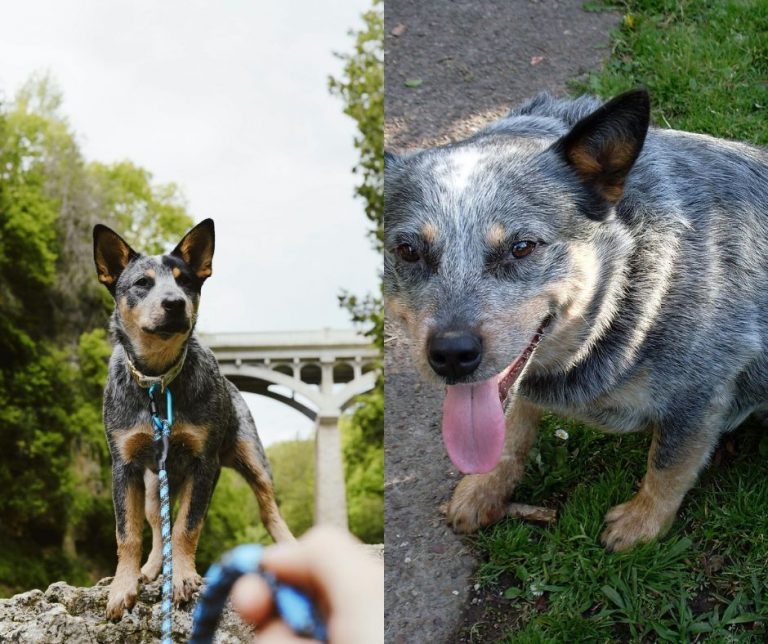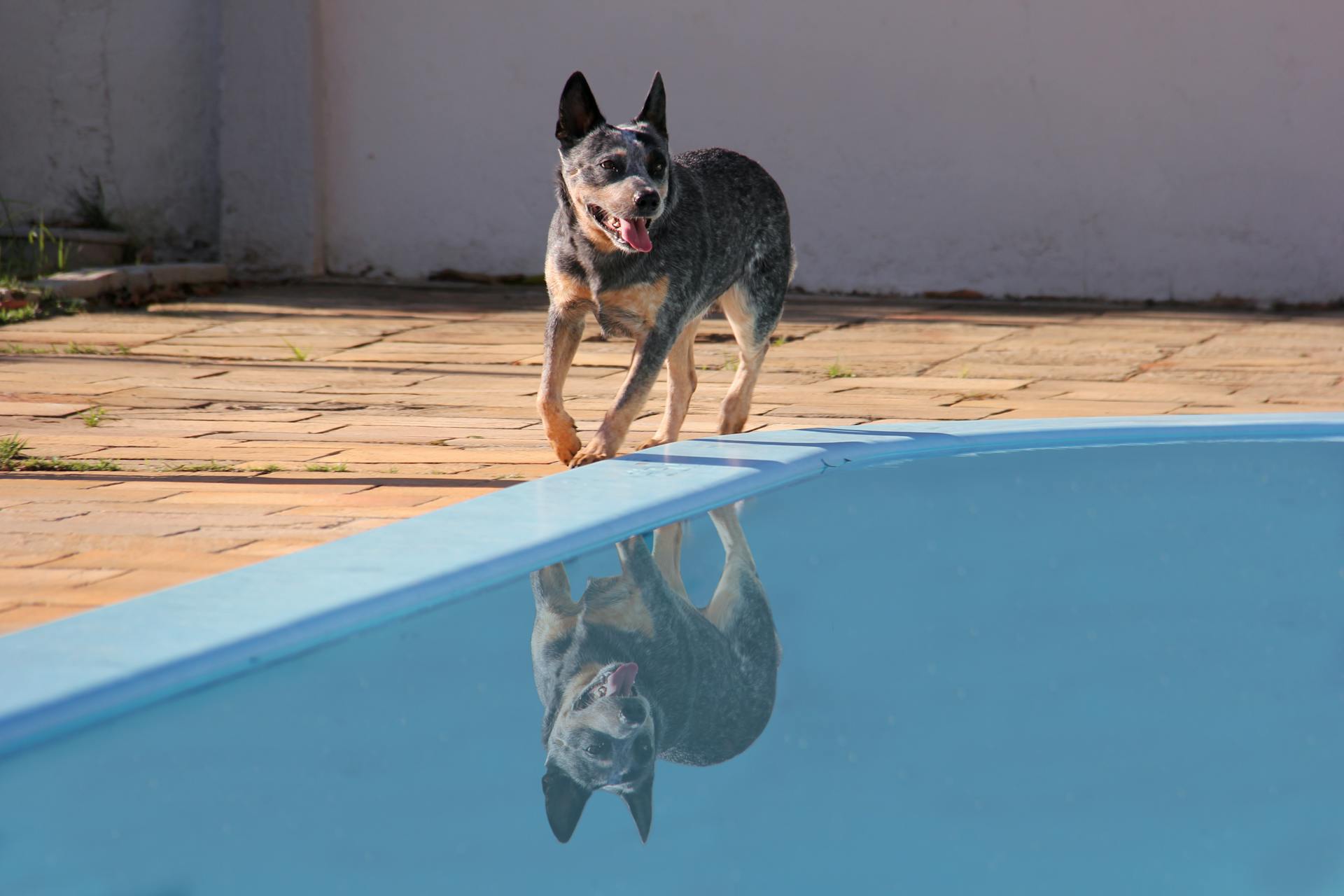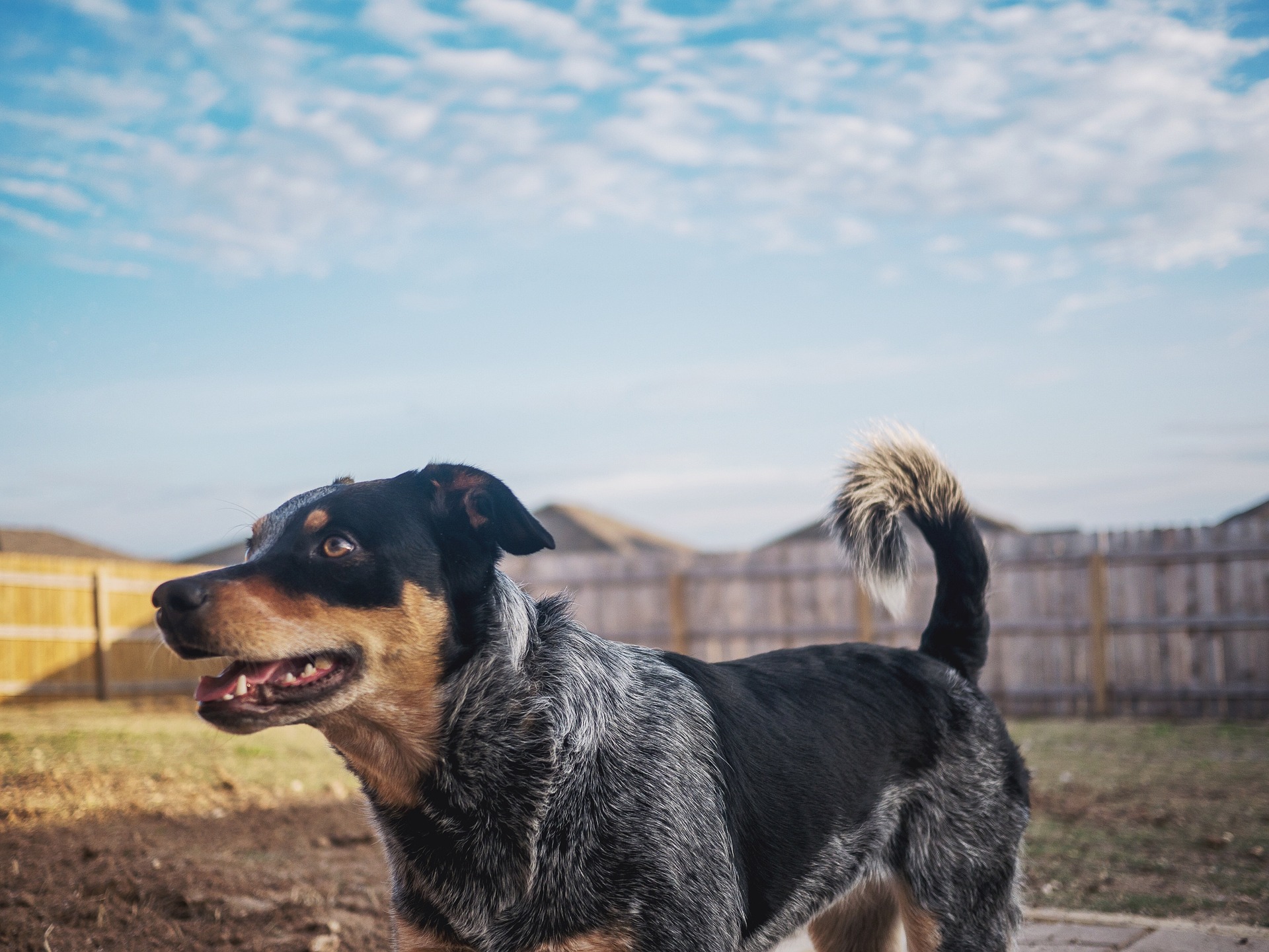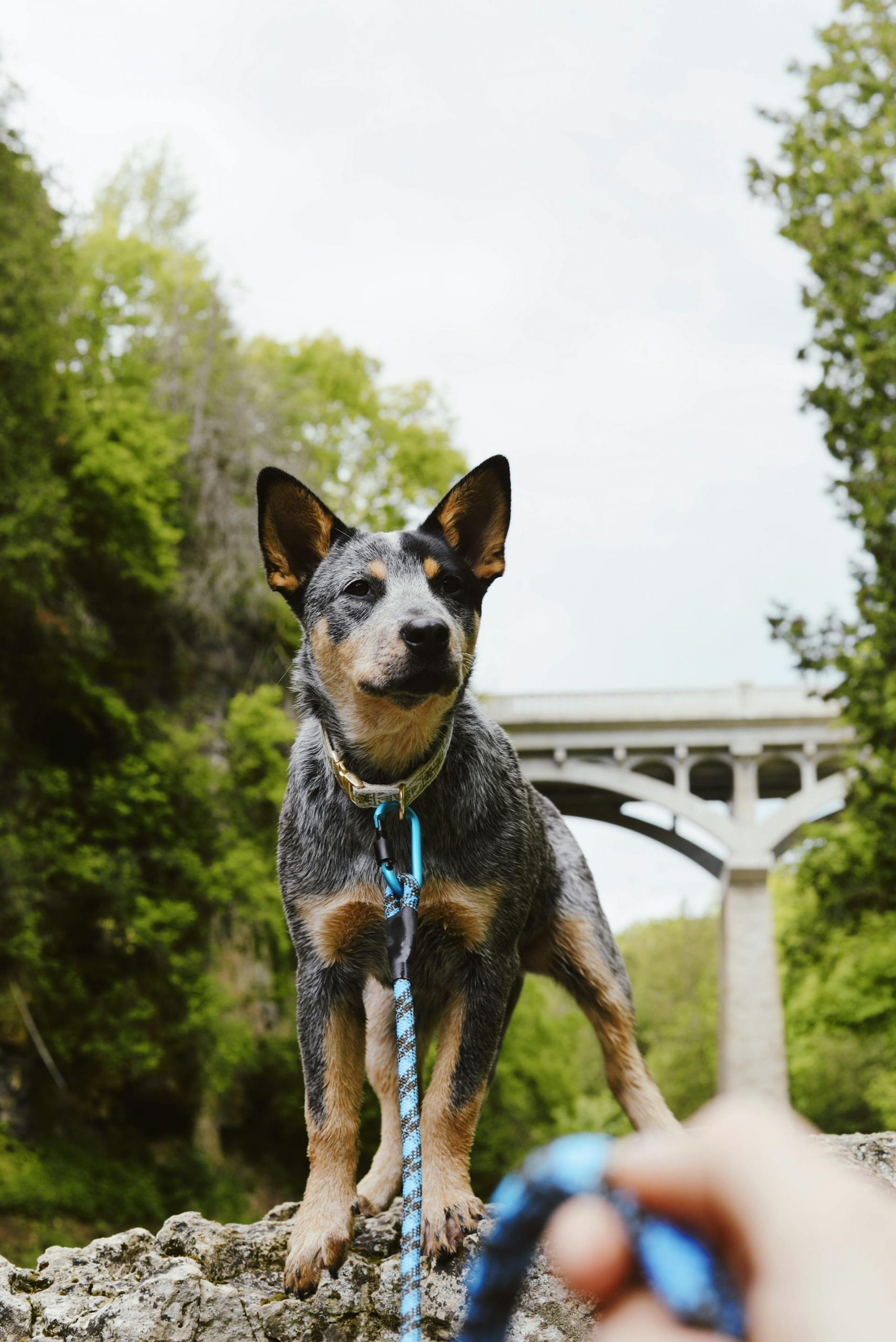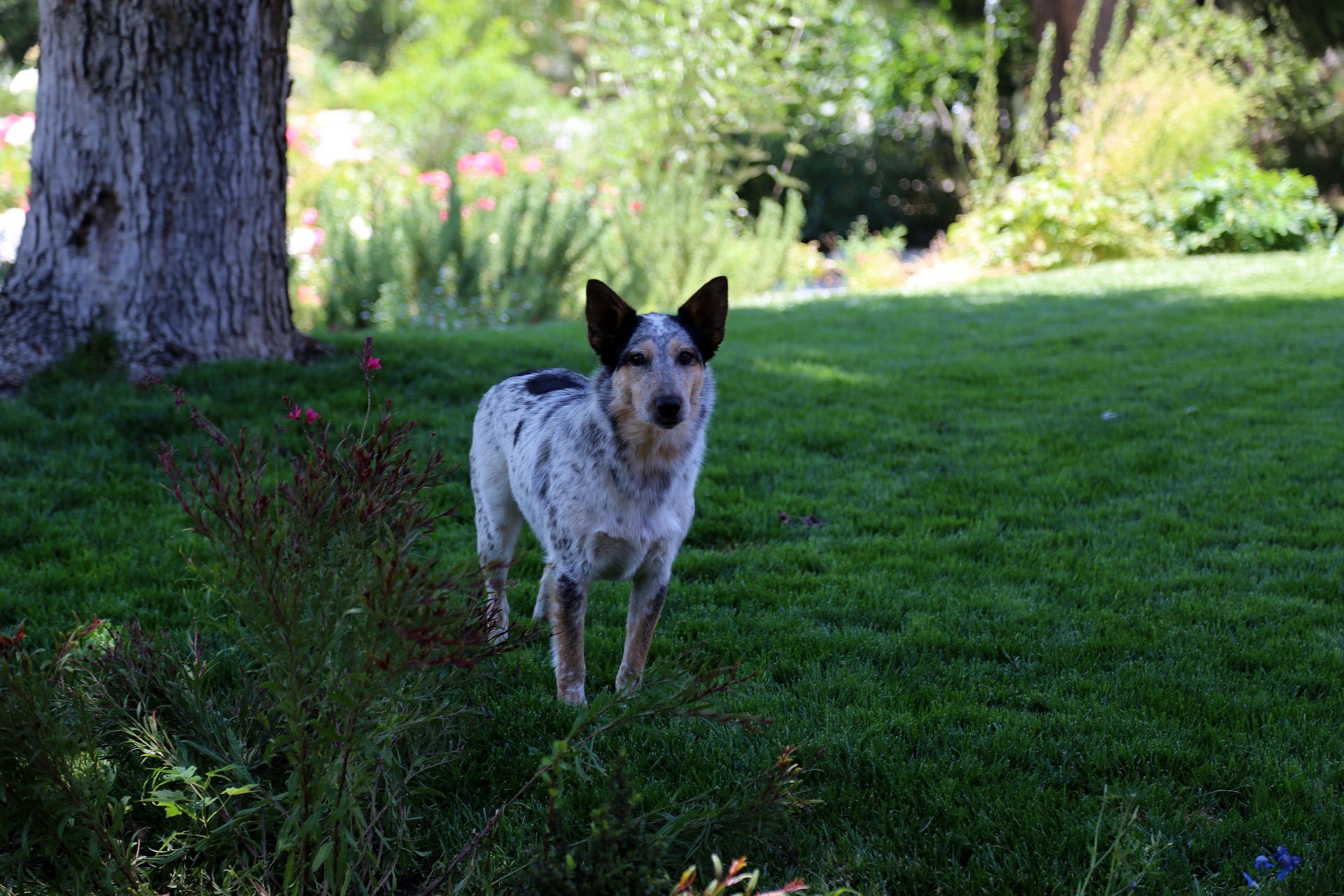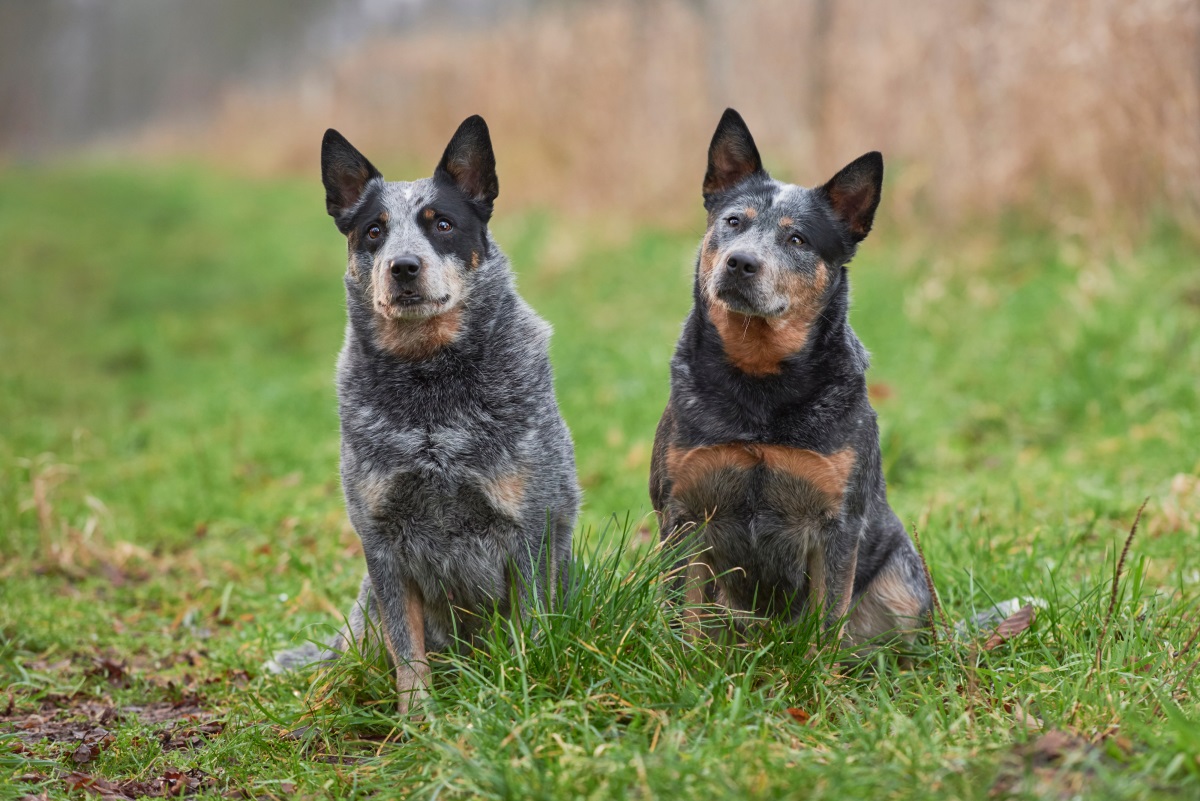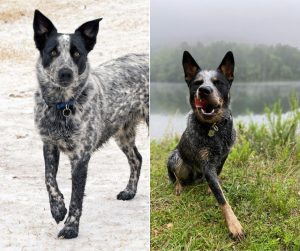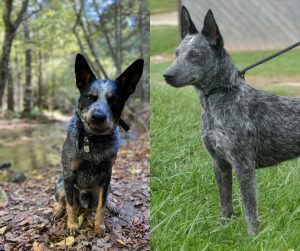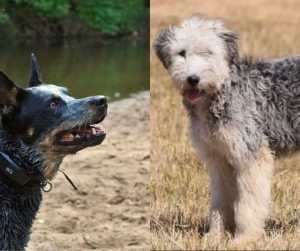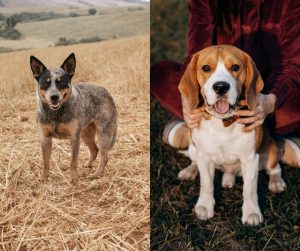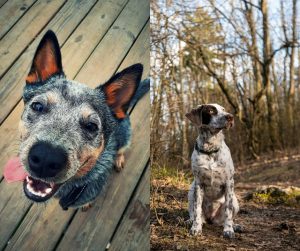When you’re pondering the perfect pup to bring into your family, it’s not just about picking out the cutest one or the one with the most sparkle in its eyes. It’s about finding a match for your home and lifestyle.
If you’ve ever seen an Australian Cattle Dog, you might have fallen for its charm and smarts. But did you know there are two sizes to choose from?
Yep, you’ve got the Mini Blue Heeler and the Standard Heeler—same spunky personality, just different in size!
So, what sets these two apart? You’ve got the Standard Blue Heeler, with a height of around 17-20 inches and tipping the scales between 35 and 50 pounds. They’re your go-to outdoor buddy, ready for action and with enough energy to light up a room.
On the flip side, the Mini Blue Heelers are, well, mini, standing at about 11-15 inches and weighing in at a daintier 12-25 pounds. They’re the compact version, perfect if you’re a bit short on space but not on love for the breed.
And when it comes to breeders, be sure to find one who’s all about the health and happiness of these furry friends, whether mini or standard.
Bringing home a new dog is a big deal, and these two variations of the Australian Cattle Dog have their own set of needs and quirks. But no matter their size, they’re known for their loyalty and hardworking nature, bred originally for herding cattle. Let’s take a look at the Mini Blue Heeler vs Standard Blue Heeler dog breed comparison.
Just know that both require your time, dedication, and maybe a pair of good running shoes for all the adventures ahead!
Key Takeaways
- Both Mini and Standard Blue Heelers share a similar look and temperament, differing mainly in size.
- Mini Blue Heelers are more suited for smaller living spaces, while Standards are built for more active lifestyles.
- Prospective owners should find reputable breeders and consider each variety’s needs and characteristics.
What Is a Mini Blue Heeler?
The Mini Heeler is a pint-sized version of the Australian Cattle Dog, a spirited and robust herding breed. Down under in size but equally big in heart, this petite cowboy brings all the personality of its standard-sized cousin into a smaller package that fits snugly into various living situations. Where it comes from and what makes it stand out are stories worth sharing.
Origin and History
Once upon a time in Australia, cattle herders were on the lookout for a dog that could handle the tough job of herding cattle over vast lands. They mixed a few breeds here and there, and bam! The Australian Cattle Dog, or the standard heeler, was born. But humans are always up for trying something new.
So, when a sprinkle of the dwarfism gene made its way into the mix, the Mini Blue Heeler wagged its way into the world. It’s not an old-timer breed with a long history, but it’s gaining fans fast.
Because of its origin, many people recognize this dog breed as Queensland Heeler and Hals Heeler as well.
Defining Characteristics
Picture a dog that’s all muscle, with a look that says, “I’m here to work,” but small enough to fit comfortably in your lap – that’s the Mini Blue Heeler.
Standing 11 to 15 inches tall, these dogs are the more compact, apartment-friendly version of the Standard Heeler. They tip the scales at a lighter 20 to 35 pounds on average. What makes the minis mini is that dwarfism gene, which shrinks the size but leaves the spirit and looks untouched.
Same blue and white coat, same alert eyes, just in a smaller frame.
Standard Blue Heeler Overview
The Standard Blue Heeler is a sturdy and reliable breed with a look that catches your eye and a personality that’s just as impressive. These dogs are not only good-looking with their unique coat but also full of spirit, making them great companions for those who love an active lifestyle. We have to say, the Blue Heeler is just one color variation of the Australian Cattle Dog. The other is Red Heeler.
Breed Profile
- Origin: Australia
- Breed Group: Herding
- Lifespan: Typically 12-15 years
| Size | Height | Weight |
|---|---|---|
| Medium | 17-20 inches | 35-50 pounds |
These dogs are well known as hard workers with a history of herding cattle. This breed’s longevity speaks to its robust health and heartiness.
Physical Appearance
- Body: Compact and muscular
- Coat: Short, dense, weather-resistant
- Colors: Blue, blue mottled, or blue speckled with or without other markings
The Standard Blue Heeler sports a coat that’s made for being outside, no matter the weather. Its strong legs are built for running and working, while the broad head and alert eyes showcase its intelligence and readiness for action.
Personality Traits
- Energetic: Always ready for a good run or a game of fetch
- Smart: Quick to learn new tasks and commands
- Loyal: Forms strong bonds with its family
With a keen mind and high energy levels, these dogs are happiest when they have a job to do or space to roam and play. Their loyalty and protective instincts make them natural guardians of their home and loved ones.
Temperament and Behavior
When getting to know Blue Heelers, it’s good to focus on how they act and what they need to be happy. They have a lot of energy and smarts, and they really stick by their families.
Getting them socialized early helps them get along well with people and other animals, and considering where they live is important for their well-being.
Typical Temperaments
Mini Blue Heelers and Standard Heelers share similar temperaments. They’re intelligent dogs with a lot of energy. Both are also known for being loyal to their families. Here’s a quick breakdown:
- Mini Blue Heelers:
- Can be more energetic than their larger buddies.
- Really smart, enjoy mental challenges.
- Close bond with their owners.
- Standard Heelers:
- Just as bright and energetic as minis.
- Very protective of their people and property.
- Their loyalty makes them great companions.
Socialization Needs
These dogs need to learn how to be around others. It’s best to start when they’re young. This helps them be friendly and polite, especially in new situations. Here’s how to help them with their social skills:
- Meet New People: Gently introduce them to a variety of folks.
- Play Dates: Let them hang out with other friendly dogs.
- Training Classes: A great place for them to learn and socialize.
Environmental Considerations
Both mini and standard Heelers do best with space to play and burn off their energy. They are not great for small apartments unless they get loads of daily exercise. Here’s what they need:
- Plenty of Space: A yard or park nearby is ideal.
- Mental Stimulation: Games and toys that make them think.
- Daily Exercise: Long walks, runs, or playing fetch are great.
Health Considerations
When we talk about the health of Mini Blue Heelers compared to Standard Heelers, we’re looking into some common issues they may face, how long they typically get to hang around with us, and the best ways to look after them.
Both sizes of Heelers might deal with similar health conditions due to their genetics, and knowing what to expect can help keep these energetic dogs happy and healthy.
Typical Health Issues
Mini Blue Heelers and Standard Heelers share similar genetic backgrounds, so they often face the same health concerns. Some of the issues these dogs may come across include:
- Hip Dysplasia: A condition where the hip joint doesn’t fit together perfectly, which can lead to arthritis or pain.
- Progressive Retinal Atrophy (PRA): An eye disorder that gradually reduces eyesight, leading to blindness.
- Deafness: Both breeds can be prone to hereditary deafness, often detected through early testing.
- Hereditary Cataracts: This can cause cloudy spots on the lens of the eye, possibly resulting in blindness if not treated.
Watching out for signs of these health problems and regular vet check-ups can help them live more comfortable lives.
Life Expectancy
The life span of these dogs typically ranges from 10 to 15 years, depending on various factors like genetics, diet, and exercise.
Mini Blue Heelers are often expected to live a little longer than larger breeds, which is a common trend in the dog world. But no matter the size, giving your Heeler a loving home and appropriate care can help them reach those golden years.
Caring for Your Heeler
Caring for a Heeler of any size means addressing their physical and mental needs. They require:
- Regular Exercise: These dogs have energy to burn, so they’ll need plenty of playtime and walks.
- Mental Stimulation: They’re smart, which means they’ll need activities to keep their brains busy.
- Proper Nutrition: A balanced diet is key for maintaining their health and dealing with any breed-specific issues.
- Routine Health Checks: Regular vet visits help catch any of the typical health issues early.
Care Requirements
When it comes to looking after these energetic dogs, they need the right food, plenty of playtime, and regular brushing to keep them happy and healthy. Let’s break down what that means for the mini blue heeler and the standard heeler.
Diet and Nutrition
Both mini and standard heelers thrive on a balanced diet rich in nutrients. It’s important to feed them high-quality dog food that suits their energy levels.
For the little guys, that means:
- Mini Blue Heelers: About 1 to 1.5 cups of dry dog food a day, split into two meals.
And the big friends will need a bit more:
- Standard Heelers: Roughly 1.5 to 2.5 cups of dry dog food a day, split between two meals.
Remember, the exact amount can vary depending on their activity level, age, and health. Treats are great for dog training, but don’t overdo it!
Exercise Demands
These dogs were born to move! They’ve got energy to burn and they’re not afraid to show it. Here’s the lowdown:
Mini Blue Heelers:
- At least 45 minutes to an hour of exercise per day.
Standard Heelers:
- About an hour or more of exercise daily.
This can be walks, runs, or just playing fetch in the backyard. They’re herders by nature, so they love games that make them think and move.
Grooming Obligations
Both sizes have coats that can handle quite a bit before they get messy, but they do shed. Here’s how to keep their coats nice and neat:
- Brushing: About once a week should do it to keep the shedding under control and their coats shiny.
- Baths: Once every few months, unless they roll in something yucky.
Regular nail trims and ear checks are a good idea too, to keep them in top shape.
Training Your Blue Heeler
Training a Blue Heeler is an enjoyable and rewarding experience. These dogs are bright and tend to pick up new commands quickly. Using positive reinforcement methods makes the process smoother and can turn dog training sessions into a fun bonding time. Australian Cattle dogs are some of the most intelligent dog breeds in the world. They often go head-to-head with another herding dog, the Australian Shepherd. And another herding breed sits at the top, the Border Collie.
Training Tips
First things first, Blue Heelers are super smart! It’s amazing how quickly they can learn new things.
The key is to start training early and be consistent. They really thrive on positive reinforcement, so always have some treats handy for when they do a good job.
And remember, short and fun training sessions keep their attention better. No one likes to get bored, right?
- Keep it Fun: Training should feel like a game, not a chore.
- Be Consistent: Same rules apply all the time, so there’s no confusion.
- Positive Reinforcement: Treats and praises work like a charm.
- Short Sessions: They learn better in quick bursts of activity.
Behavioral Training
Now, when it comes to behavior, Blue Heelers can be a bit of a handful. They’re energetic and sometimes that energy needs the right direction.
Start with the basics like ‘sit’, ‘stay’, ‘come’. These are the building blocks for a well-behaved pup.
And if your furry friend gets too excited and jumps on people, don’t fret. Turn your back and ignore them until they settle down, then praise them when all four paws are on the ground.
They’ll catch on that calm behavior gets them the attention they want.
- Basic Commands: These are the foundation of good behavior.
- No Jumping: Ignore them until they calm down, then offer praise.
Exercise in Training
Incorporating exercise into training is like hitting two birds with one stone. Blue Heelers have lots of energy and need to run and play to stay happy.
Why not teach them to fetch while you’re at it? It’s a great way to tire them out and reinforce commands like ‘come’ and ‘drop it’.
Plus, it’s a hoot seeing them sprint and bring back that ball. It’s gone in a flash and back before you know it!
- Fetch: Great for exercise and practicing ‘come’ and ‘drop it’.
- Agility Training: Challenges both their mind and body.
Mini vs Standard: Making the Choice
When picking between a Mini and Standard Blue Heeler, it’s all about what fits in with your life – their size, how much playtime they need, and how they mix with your family vibe.
Size Considerations
Mini Blue Heelers are, well, mini. They stand between 11-15 inches tall, and they won’t tip the scales like their bigger buddies, usually weighing in at 12-25 pounds.
They’re easier to squeeze into your apartment or car, but don’t let their size fool you – they’re just as tough as the standards!
On the flip side, Standard Blue Heelers are about twice the size, around 17-20 inches tall, and they can weigh from 35 up to 50 pounds. If you’ve got the space and want a larger buddy to run around with, they might just be your match.
Energy and Activity
Regardless of size, Blue Heelers are known for their ‘get up and go’ attitude. They’ve got energy for days and were born to move!
Mini or Standard, you’re looking at a furball of energy that’ll keep you on your toes with their antics and desire to play.
They’re not just a walk-in-the-park type of dog; think more along the lines of hiking and playing fetch until your arm gets tired.
Family Compatibility
Both sizes of these Australian Cattle Dogs make for great family pets. They’re loyal, protective, and love being part of the gang.
However, if you have kids, you might lean towards the Mini because they’re easier for little hands to manage and less overwhelming due to their size. They all cherish a strong bond with their humans, and they’ve got heaps of love to give, regardless of how big they are.
Finding Your Blue Heeler
Finding the right Blue Heeler for your family involves considering where to get one. Whether you choose a breeder or go the adoption route, doing a little homework first can make a big difference.
Choosing a Breeder
When looking for a breeder, you want someone who cares deeply about Blue Heelers. It’s important they are doing it for the love of the breed, not just to make money.
A good starting point is to check if they are recognized by the American Kennel Club (AKC), which means they are likely to adhere to specific standards. Here are a few pointers to keep in mind:
- Reputation: Look for reviews or get recommendations from other dog owners.
- Health Clearances: The puppies should come with health clearances and vaccination records.
- Visit: If possible, visit the breeder to see the conditions of the dogs and puppies.
Puppies for Sale
Finding puppies for sale can be exciting but you should take care not to make an impulsive decision. Here’s what to focus on:
- Health: Puppies should appear healthy, with bright eyes and energetic behavior.
- Socialization: They should be well-socialized, comfortable around people and other dogs.
- Paperwork: Ensure proper paperwork is provided for breed authenticity and health checks.
Adoption and Rescue
Adopting a Blue Heeler can be a rewarding option, offering a loving home to a dog in need.
Adoption agencies and rescue organizations are good places to find Blue Heelers that require a second chance.
When adopting:
- Background: Ask about the dog’s history and behavior.
- Compatibility: Spend time with the dog to ensure it’s a good match for your lifestyle.
- Rescue Organizations: Look for reputable groups that may even specialize in Blue Heelers or Australian Cattle Dogs.

